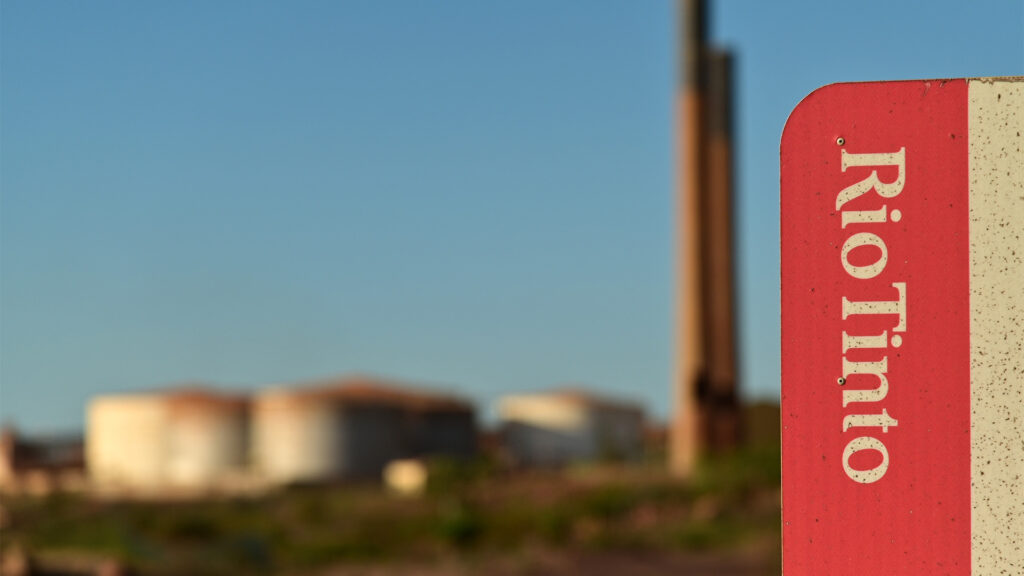It has been a bustling end to 2023 for Rio Tinto (ASX:RIO). A new iron ore mine in the Pilbara, confirmation of progress on a significant iron ore mine in Guinea, and finally, the long-awaited advancement in their Winu copper/gold and silver prospect towards the mining stage.
The preliminary studies and drilling for the massive Rhodes Ridge iron ore deposit will cost over half a billion dollars, while Rio’s involvement in the Simandou project in Guinea amounts to nearly $A12 billion. Now, with Winu, the cost is expected to reach hundreds of millions of dollars.
These developments and more were unveiled at the company’s 2023 investor day in Sydney this week.
The Winu copper-gold project is located in the Paterson Range of the East Pilbara, where Rio Tinto discovered its mining potential almost seven years ago. It shares the area with Newcrest/Newmont/Greatland’s Havieron prospect, Newcrest/Newmont’s older Telfer mine, and several other smaller prospects and older mines.
Progress on Winu moved a step closer this week as Rio sought WA environmental approval for the mine. While Rio has yet to disclose the resource/reserves size and the anticipated mining rate, there are suggestions that it could have a life span of 40 years or more.
Rio has been in discussions with Traditional Owner groups regarding the mine’s plans. The company has emphasized its intention to collaborate closely with the Nyangumarta and Martu Traditional Owners, working at their pace without rushing the development of Winu.
If the mine progresses, it will involve open pit mining below the water table and the extraction of 490 million tonnes of waste rock over the project’s lifespan. Rio has also speculated about Winu’s potential to support a network of mines.
Work on the project was halted in 2020 due to challenges posed by COVID-19 lockdowns, as well as the controversy surrounding the Juukan Gorge sacred rock shelters at one of its Pilbara iron ore mines, which led to a pause in discussions with traditional owners at Winu.
In July 2020, Rio announced that the Winu resource contained just over half a billion tonnes of copper ore, along with an adjacent prospect with gold, silver, and copper values.
Rio stated, “The Inferred Mineral Resource, reported at a 0.2% copper equivalent cutoff, is 503 million tonnes at 0.45% copper equivalent (CuEq). This includes a higher grade component of 188 million tonnes at 0.68% CuEq at a cutoff grade of 0.45% CuEq.”
At that time, Rio planned to commence mining the higher-grade ore in 2023. However, this target date has been pushed back by a year or more, contingent on receiving environmental approval for the project.
Rio indicated during an investor day that the proposed development will be environmentally friendly, with the company planning to use solar and wind power to reduce emissions and generate 75% of its electricity.
(Rio also revealed plans to dramatically reduce emissions at its established Kennecott copper mine in Utah by transitioning from fossil fuel-based diesel to green diesel in the next year.)
Rio will procure power for Winu from wind and solar farms and a liquefied natural gas-powered station located 300 kilometers away on the coast.
To put things into perspective, Winu’s 500 million tonnes are smaller than the second estimate for Chalice Mining’s substantial Gonneville discovery, which boasts high values of copper, gold, platinum, palladium, nickel, and some cobalt. A scoping study suggests that the first stage of mining for Gonneville could cost over $2 billion. However, this is being reevaluated as the company considers developing the high-grade sulphide ores with a combined open cut and underground operation.
In conclusion, while Winu is undoubtedly significant, Gonneville is even larger and promises higher copper production annually. Some might argue that Rio should consider acquiring Chalice and deferring Winu.

